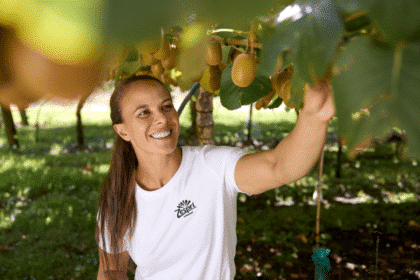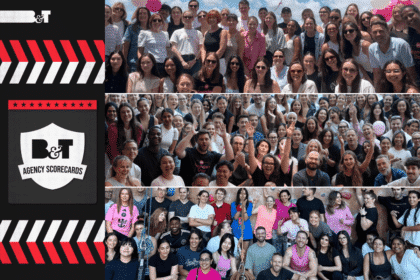Francisco Cordero, general manager and regional director in Australia and NZ for InMobi, shares the challenges facing mobile in 2013
2012 has absolutely been the year of mobile, and as a mobile focused global technology organisation, we have been encouraged by the demand from the industry.
Australian brands across many verticals have finally responded to the ongoing consumer demands and have built out their mobile destinations to support the massive shift that has occurred with regards to consumer usage and behaviour – driven by the mass adoption of smartphones.
In Australia, mobile users spend 28% of their time accessing content on mobile – this is more than any other channel. Furthermore, brands have now recognised that building a mobile-optimised site is not enough. A well thought through mobile strategy is essential to engage consumers who are using these connected devices throughout the day to find information and access media.
Next year, we expect to see mobile advertising continue to grow significantly as digital media spend continues to catch up with the amount of time consumers spend on their connected devices – across smartphones and tablets. And, contrary to the media buying industry’s beliefs, marketing budgets and spend is far more advanced than some are willing to admit. As a business purely focused on mobility, we have already seen large portions of digital marketing budgets being committed to mobile.
Organisations that have run mobile campaigns this year are ahead of the curve and already implementing key findings into their next cycle of planning. Those still living in a PC world are going to be left behind unless they begin to shift their thinking.
The traditional PC environment has begun to stagnate, as the always-on, always-there nature of smartphones and tablets provide great opportunities for brands to reach consumers. Mobile media time is now broken up into regular ‘snacking’ sessions throughout the day rather than prolonged periods of browsing. As consumers use these devices throughout the day to access media, information, make decisions, and shop, mobile lends itself to advertisers at various stages throughout the purchase funnel, from awareness down to final decision-making.
Furthermore, while PCs have largely become functional and work-oriented devices, mobile devices are leveraged highly for entertainment as well as administration and functionality. Consumers tend to be much more receptive to ads when engaged in leisure activities.
Innovative brands that are spending on mobile are experiencing great success, leveraging mobile in cross platform campaigns. They have taken notice of the multiplier effect in advertising research, in which various platforms in a campaign build upon each other. According to Nielsen, campaigns incorporating both TV and tablet advertising are significantly more effective than TV-only campaigns.
Mobile also offers multiple methods to engage consumers, such as rich media ads which incorporate games and multimedia content, click-to-call ads, and social elements which can be used to share ads as well as to communicate directly with consumers.
There is also a real opportunity for brands to use mobile to improve their customer service, via social media channels such as Facebook and Twitter. This has become more prevalent in the past 12 months. In most cases, this spend is new and marketers are still figuring out how to invest more as mobile becomes a channel to manage customer experience.
The mobile advertising industry is still evolving and the opportunity for brands to tap into a targeted and a receptive consumer audience is vast. Mobile offers so many more targeting opportunities compared to online, including device, carrier and, most importantly, location. Knowing a consumer’s location provides a layer of context that is so powerful in the world of mobility.
Dual-screening rates are high – the majority of consumers in Australia now use mobile devices while watching TV. This allows planners to amplify and build on their TV ad campaigns with highly engaging interactive mobile ad formats. We found that over 59% of Australian tablet users regularly interact with their tablet while watching TV, which is great news for brands looking to engage with consumers at their peaked point of interest – We refer to this time as Mobile Prime Time.
The mobile app platform has emerged rapidly over a short period of time and brands have yet to adjust to consumers’ unprecedented adoption of apps. And the mobile ecosystem will become more fragmented, presenting a challenge for advertisers and agencies looking to deliver creativity at scale.
Our acquisition of Sprout last year (a rich media authoring platform, now re-branded to InMobi Studio) enables advertisers to build ad campaigns quickly and effectively, which in turn run across all handsets, ad formats and platforms.
Part of our strategy next year is to continue to educate the market about these technology platform advancements and silence the critics that continuously see barriers of entry that the smaller screen creates.
As consumption of media shifts further to mobile devices, advertisers will look for better solutions to deliver their messages to consumers. The combination of advances in technology, combined with the recognition that mobile is a relevant and important channel for marketers, will result in these barriers coming crashing down and another round of growth in this fast moving part of our industry.
In the next 12 to 18 months, we expect to see an increase in cohesive cross-channel campaigns across mobile devices and other types of media. It’s no longer enough to try to deliver the same message or ad already running on TV, on mobile. There will also be increased emphasis on mobile apps, tablet devices and requirements for cohesive cross-media campaigns.
As consumer engagement with mobile continues to increase around the world, marketers will continue to focus on how to best engage users.








